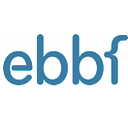Written By Sara DeHoff
With all the different crises we are facing right now — the global pandemic, racial injustice, climate change, just to name a few — it’s becoming clear that our best solutions come when we work together to look at the situation from all angles.
So how do we get better at this?
Consultation is a tool that allows a team to do just that.
An effective form of group decision-making, consultation strives to understand the reality of a given situation and welcomes all points of view. Once a view is stated, it no longer belongs to the individual who voiced it, but rather to the group as a whole. After hearing all the different perspectives on the problem, the group can then synthesize the different views and decide on a course of action. Once a decision is made, everyone supports it. That way, if a course correction is needed, the group can quickly come together and make a new decision.
Recently, EBBF and the Wilmette Institute held a course on Bringing Consultation to the Workplace, which generated a lively discussion on how to use this tool in all kinds of workplaces.
Participants hailed from Singapore to Oregon, from the United Kingdom to Tennessee.
They learned from video interviews of people who are actively using consultation in their businesses and organizations. They practiced the skills of consultation in a weekly international video call.
One group of geographically diverse participants formed a study group to bring consultation to local governance, to their own towns, by applying that spirit to committees dealing with issues such as disaster recovery and racial injustice. They focused their efforts on one town in particular that recently formed a commission to address racial justice and equity. This group is continuing their work beyond the duration of the course.
In all of this, there’s a realization that this process of working together takes practice. The process of learning that occurred during the course allowed a number of issues to surface, and in the attached articles links you can click on more insights on many of those questions.
- How do we make space so everyone has a seat at the table?
Sometimes it takes doing the thing that’s uncomfortable in order to allow room for others to participate. - How do we make sure everyone has a voice?
Even when we’re all at the table, what are the dynamics that make it easier for some to talk and harder for others? What do we do about it? - How do we really listen?
The real test of listening is when we encounter someone who voices an opinion that’s the opposite of our own. Can you hear, even if you disagree? - How do we remember to pause and ask who is missing? What perspectives are not represented?
Often we settle into comfortable routines and don’t even realize that we don’t have all the information because we don’t have all the voices. Those voices are crucial to making good decisions. How do we bring them in?
These are just a few of the questions this course has inspired. We’d love to hear your insights. Please share your thoughts and questions about decision making and the art of consultation in the comments.
